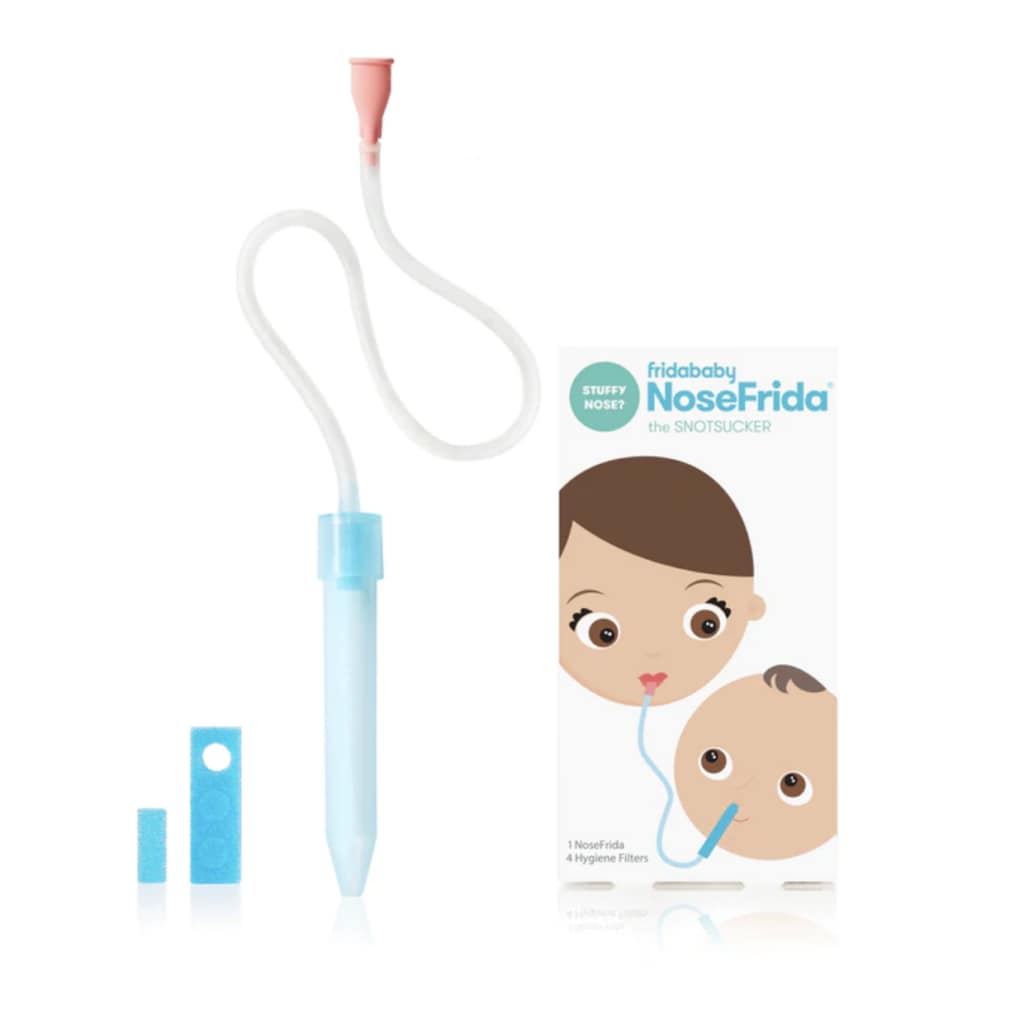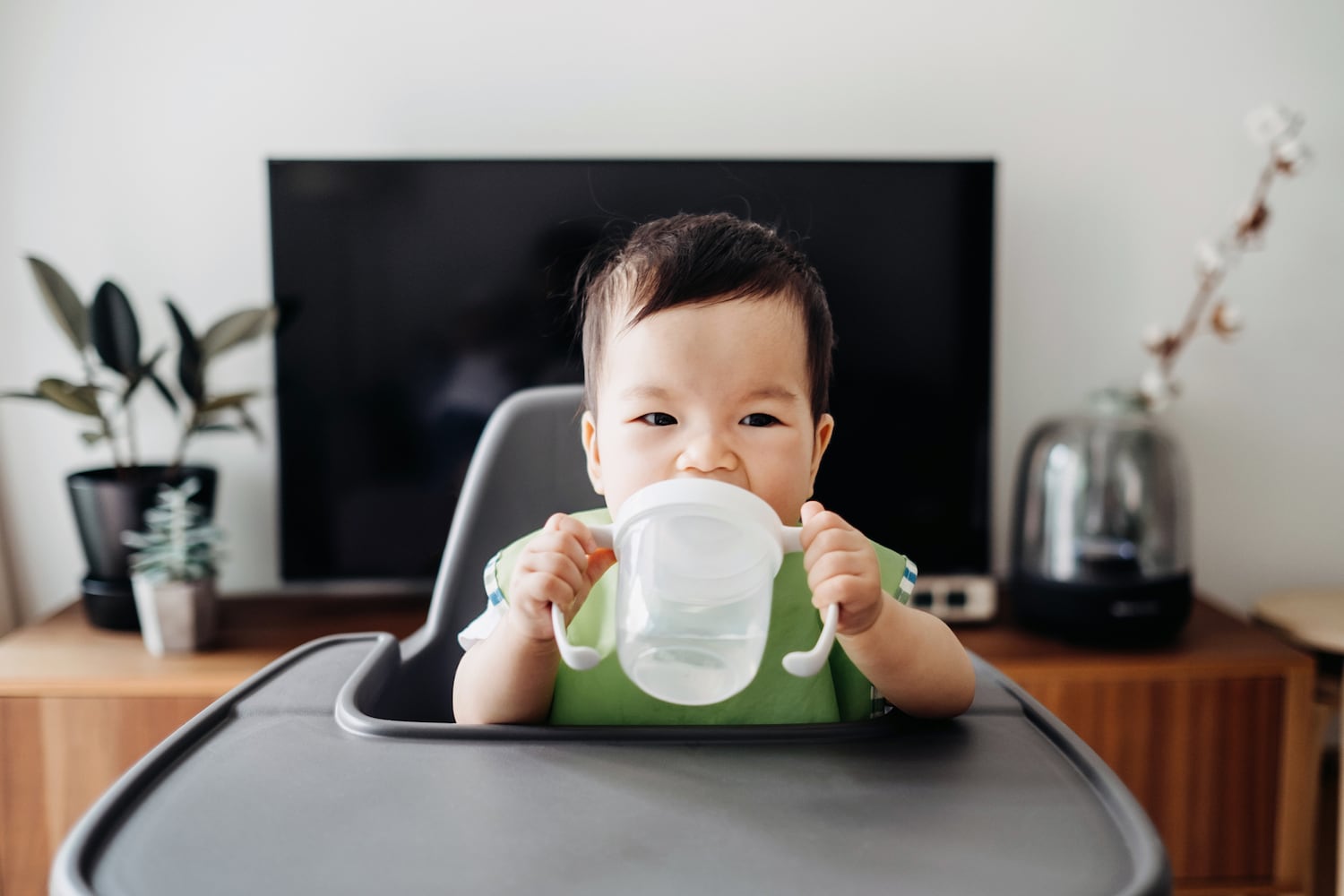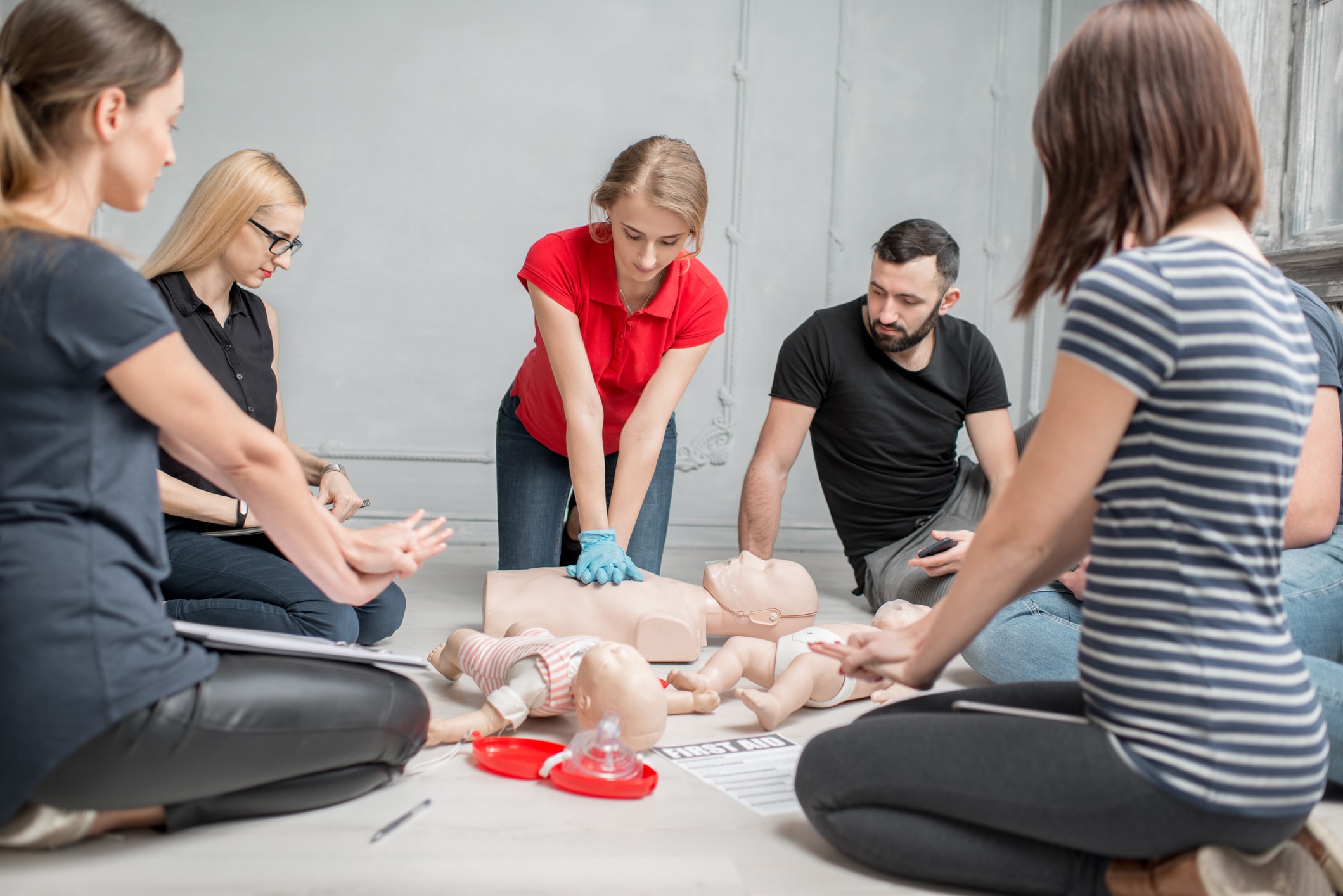In this article
When a baby gets a stuffy nose, it can be a real bummer for them and for the people who care for them. Suddenly, they might be extra fussy, refuse food and even fall out of their usual routines.
“Babies are nose breathers and do not breathe through their mouths,” says Dr. Pierrette Mimi Poinsett, a California pediatrician and a medical consultant for Mom Loves Best. “Often, a baby will not feed or sleep well if their nose is congested.”
There are a number of devices and products that claim to be able to help unblock babies’ noses, but some parents swear by a DIY method: the mother’s kiss. This trick, which is primarily used to remove objects stuck up a child’s nose, is performed by plugging one side of a baby’s nose, placing your mouth over theirs to form a seal, and then blowing a quick puff of air to clear the blocked nostril.
But is the mother’s kiss safe? Here, pediatricians share what parents and caregivers should consider before trying this trick.
Key takeaways
- Babies often struggle with stuffy noses because they primarily breathe through their noses, which can make feeding and sleeping difficult.
- While some parents try methods like the “mother’s kiss” to clear nasal congestion, experts caution against it due to infection risk and recommend safer options like saline drops and bulb syringes or nasal aspirators.
- Unless the baby shows signs of distress or other serious symptoms, most nasal congestion clears on its own and doesn’t require medical attention.
Is it safe to blow into my baby’s mouth to clear their nose?
The most important thing to consider before unblocking a baby’s nose with your mouth is germs. If you or the baby are sick, placing your mouth over theirs to unblock their nose is “a surefire way to spread infection,” Poinsett says. For that reason, she advises against using the “mother’s kiss” method to “blow” a baby’s nose.
Join Care for free
Another common concern is that blowing into an infant’s mouth could damage the baby’s lungs. Poinsett says the risk of that happening is very low. “Overinflating the lungs or aspiration of saliva or mucus into the lungs is possible, but unlikely,” she explains.
If you do decide to try to clear a baby’s nose using your mouth, the key is to blow gently, says Dr. Arthur Lavin, an Ohio pediatrician with more than 40 years of experience. “There’s no reason to get carried away,” he adds. “Try it, and if it clears the offending mucus, fine. If not, don’t try blowing harder.”
How can I unclog a baby’s stuffy nose?
A bulb syringe is one of the most common tools that can be used to clear snot from a baby’s nose. Poinsett recommends using the syringe in conjunction with saline drops, particularly if the baby’s mucus is very thick.
To do this properly, she suggests the following steps:
- Apply two to four saline drops to each nostril.
- Wait a few seconds for the saline drops to go up the nose.
- Squeeze the air out of the bulb syringe before inserting it.
- Put the tip into the opening of one nostril.
- Let the syringe fill with air and secretions.
In order to minimize the potential for nasal swelling or irritation, Poinsette recommends using the bulb syringe no more than four times per day. She also advises that you clean the bulb syringe, as well as your hands, with soap and water after each use.
How can I get snot out of my baby’s nose without a bulb syringe?
If you don’t have a bulb syringe or don’t like using one, there are a few other effective ways to clear a baby’s nose.
Poinsett recommends a nasal aspirator, such as the NoseFrida snot sucker. “The snot sucker is a plastic trap with an open tip that collects the mucus when a caregiver sucks on the flexible tube connected to the trap,” she says. “There is a replaceable membrane between the trap and tubing that should be changed daily.”

Where to buy: NoseFrida The Snotsucker ($15, Frida)
For older children, such as toddlers, Lavin says a Neti pot or other nasal irrigation device may be a good option. He also stresses that it’s not necessary to bother with different tools and devices if babies and toddlers aren’t showing signs of distress.
“If your baby or toddler has mucus in their nose and is not bothered, feel free to wipe away any excess mucus running out,” he says. “Beyond that, it’s best to leave the nose alone. Sticking things up the nose rubs the nose’s lining and actually leaves you with more mucus, which can make matters worse.”
“Parents [and caregivers] should take a step back and ask: ‘Is my child bothered by it?’ To be honest, usually the answer is no.”
— Dr. Arthur Lavin, pediatrician
When should I take a stuffy-nosed child to a doctor?
A doctor’s visit isn’t typically required for a stuffy or runny nose, unless the congestion lasts longer than two weeks or is accompanied by additional symptoms. The experts say to consult the child’s medical provider if you notice:
- Difficulty breathing.
- Severe cough.
- Lack of appetite.
- Extreme sleepiness.
- Fever.
If the child isn’t expressing discomfort with their stuffy nose, Lavin says it’s OK to let the mucus clear naturally.
“Parents [and caregivers] should take a step back and ask: ‘Is my child bothered by it?’ To be honest, usually the answer is no,” he says. “We don’t like seeing mucus running out of the nose or seeing dried mucus in their nose, but most of the time the baby or young child is so not bothered by it that you can honestly say they don’t notice it at all.”





